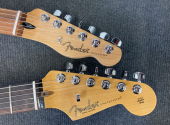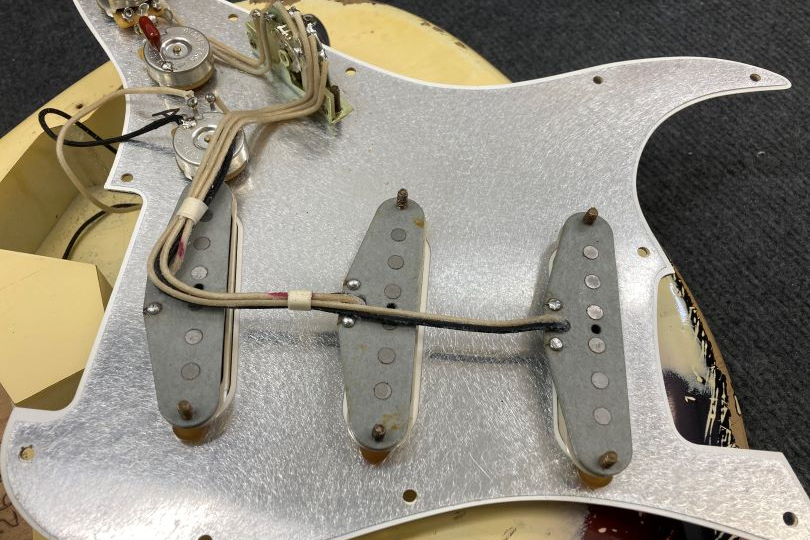
Under the Hood #9: The Evolution of the Stratocaster’s Electronics Wiring
The Fender Stratocaster is one of the most popular guitars ever. Since it conquered the world in 1954, it has been used by countless guitarists worldwide. Its concept hasn't changed much over the decades, but because it's made up of dozens of different parts, anyone can remake it in their own image. In today's part of our series, I'd like to show you how, through modifications of the electronics wiring on Stratocasters, Fender has altered the sound of the world of guitar.
Fender guitars are generally considered to be highly modifiable instruments. This is due to the way the guitar is constructed, having many parts that can be easily disassembled and replaced. This alone encourages the players to search for new and unusual solutions, such as combining different woods, new ways of wiring electronics, ideal tremolo settings, and finding ways to prevent untuning.
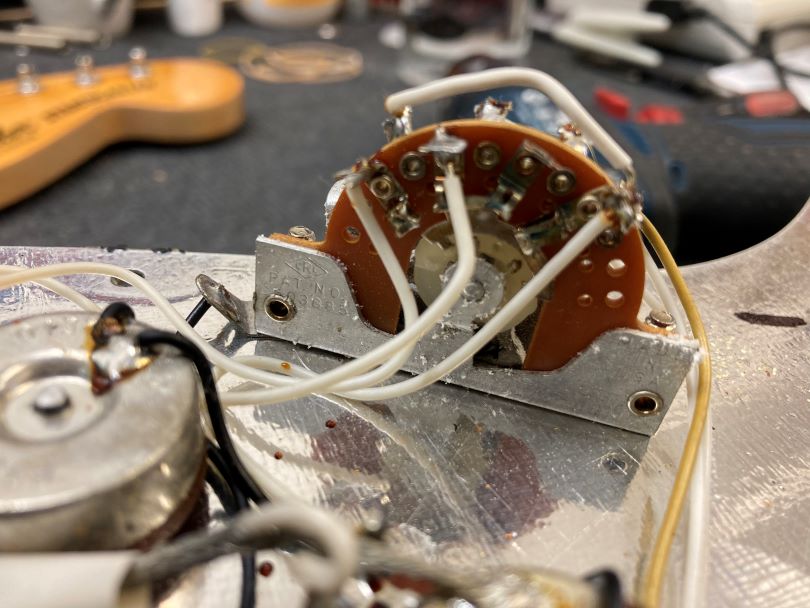
Three-position pickup switch
This time, let's start with the sound—a crucial part of any electric guitar. From the very beginning, the Stratocaster has been a guitar with three single-coil pickups. That amount of pickups offers many tonal combinations. However, more experienced guitarists are always looking for new sounds.
The bridge pickup offers a very ferocious and high-pitched sound that is very popular. The neck pickup, on the other hand, provides a warm, thick tone suitable for backing or blues playing.
The original Stratocaster had a three-position pickup switch, which, on a three-coil guitar, meant that only one pickup could have been plugged in at a time. The bridge position on the switch activated the bridge pickup, the middle position switched on the middle pickup, and the neck position controlled the neck pickup.
However, many guitarists have modified the combinations of the wiring. An example is the current Fender Ritchie Blackmore Stratocaster. It is manufactured with a three-position pickup switch, while the middle pickup is missing on the guitar and the bridge and neck pickups are wired at the same time in the middle position. The wiring is identical to the Telecaster.
The tone pots were mostly wired so that the one directly below the volume was meant for the neck pickup and the bottom pot worked for the middle one. The tone was not normally wired to the bridge pickup, which changed over time as this pickup produced a lot of treble that needed to be turned down sometimes. Of course, this could be done by turning the volume pot but it also reduced the volume.
This combination of wiring was satisfactory for most players but many guitarists explored ways to improve the sound. Over the years, guitarists discovered that if they gently set the pickup switch to the in-between position, two pickups would start playing at once. But this setting was very sensitive, and with some shaking or movement, the sound would break up.
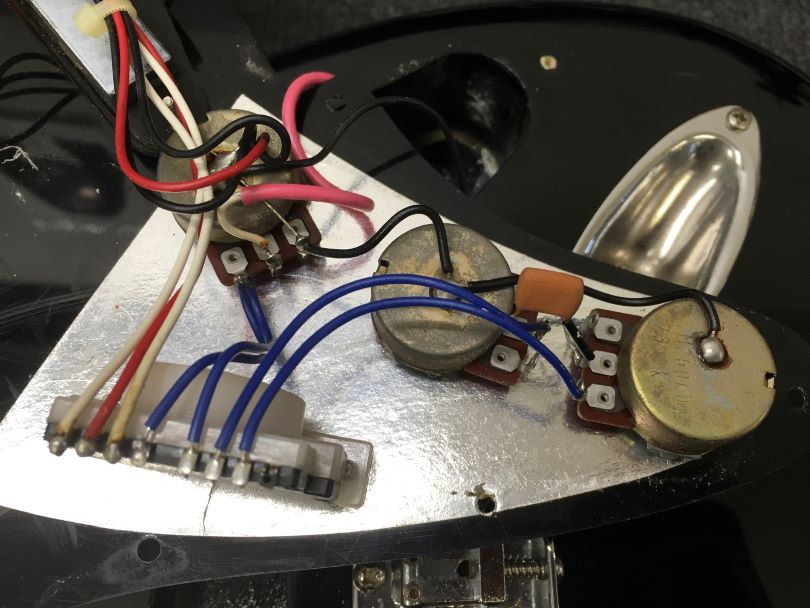
Five-position pickup switch
Then, in the late 1970s, a five-position pickup switch came into use instead of a three-position one. This allowed more pickups to be connected at the same time. New in-between positions suppressed the typical hum of single pickups, as now two pickup coils were connected at the same time. The sound in the in-between positions was different and immediately gained popularity that continues to this day.
The first side position of the pickup switch at the bridge remained unchanged, only the bridge pickup was connected. In position two, here the in-between position, the bridge pickup was activated together with the middle one, giving the sound a new dimension. Two coils were connected at the same time, so the sound was free of hum, it didn't have as much treble but still retained a lot of the bridge pickup qualities. The middle pickup played in the middle position—number three. In position four, the middle pickup was activated together with the neck pickup. The sound was thicker but not as bassy as the neck pickup alone. It was a little more subtle. In position five—i.e. side position next to the neck—the neck pickup itself was activated.
With this switch, Fender added two new sound combinations. In addition, the tone pots could have been adjusted in various ways, which also changed the character of the sound. This made playing the Stratocaster more interesting. The five-position switch is still used as the main choice to this day. On reissue models, both options are used.
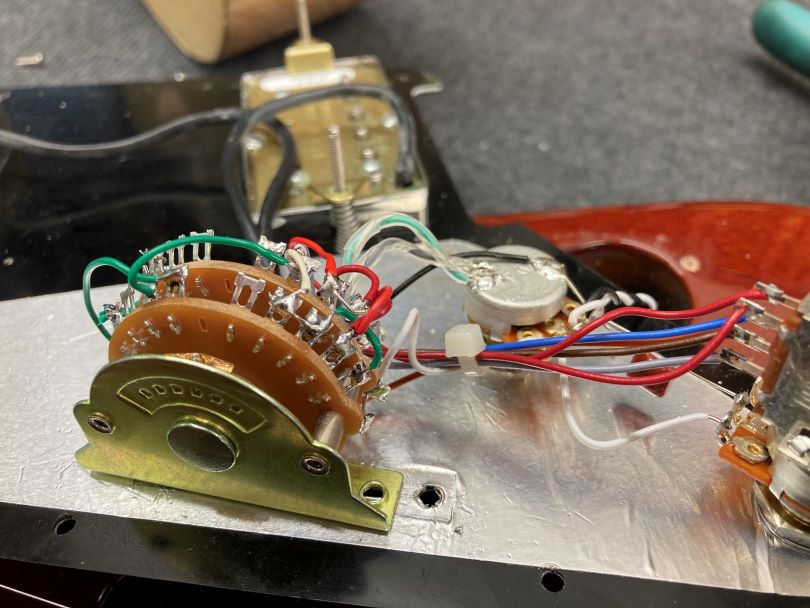
Superswitch
The next level of the five-position switch is the superswitch. This is used for more complex wiring combinations. It is advantageous, for example, in guitars where one of the pickups is a split humbucker. If the Stratocaster uses a humbucker-single-single (HSS) or humbucker-single-humbucker (HSH) pickup combination, the superswitch serves the purpose of easily connecting the middle pickup to only one humbucker coil in the in-between positions. If the middle pickup and both humbucker coils were activated at the same time in the in-between position, the sound would not be very smooth and the pickups would overlap unnecessarily.
The superswitch allows for multiple wiring options—virtually anything is possible. The wiring can therefore be made to measure. Understanding and devising your own wiring system is not that simple and requires experience. Nowadays it is possible to find many combinations on the web, but it is not easy to get savvy about them. I recommend consulting a custom wiring with a guitar technician who can always tell you what is realistic.
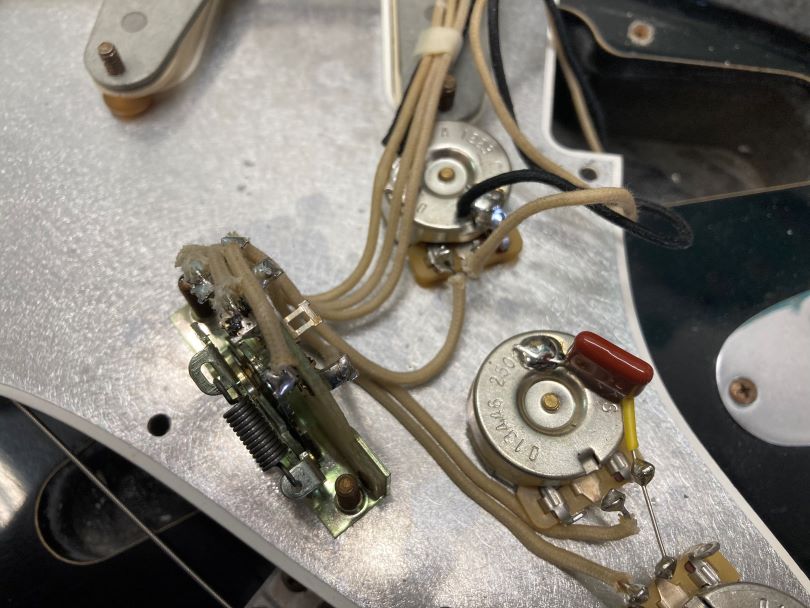
S1 switch
Nowadays, Fender offers guitars with S1 volume potentiometer, which serves not only as a volume but also as a wiring switch. The S1 switch looks just like a regular volume pot with one difference—you can press its upper part. It has two positions that change each time you press it. The combinations of pickup wiring are multiplied in this way and a considerable number of them can be invented.
So Fender has added many extra sounds without changing the look of their guitars. Which is positive, as most guitarists still prefer the unaltered and classic look of both Stratocasters and Telecasters.
There are many ways to wire the S1 switch and they vary with each series of guitars. It is not possible to list all the combinations, therefore I will mention the more commonly used ones for Stratocasters these days.
The current Fender American Ultra model comes in two versions, three single coil pickups (SSS) or in HSS combination, i.e. with a humbucker at the neck. Both models have the S1 switch and Fender lists the following wiring specifications for them.
The SSS model has standard wiring, but when the S1 switch is activated, the neck pickup is added to switch positions 1 and 2. This means that in position 1 (bridge), the bridge and neck pickups are engaged. In position 2, the bridge pickup and the middle pickup are engaged in the in-between position, with the neck pickup on top of it. This second position of the pickup switch therefore activates all pickups on the guitar at once, which is an interesting sonic choice.
The HSS model also has a classic five-position switch wiring. When S1 mode is activated, the bridge humbucker splits and plays as a single coil. This model uses the Ultra Double Tap humbucker, which is perfectly calibrated with the middle and neck single coil pickups.
In the article,in which Fender describes the function of the S1 switch, there are examples of wirings with this switch. For example, on a few years old Fender American Elite Stratocaster, the S1 switch was used to create a very interesting combination of sounds. With S1 mode deactivated, the wiring was standard, with the pickups wired in parallel in the in-between positions. When S1 mode was used, all three pickups were activated and wired in series at the pickup switch in position 1. Position 2 activated the bridge and middle pickups in series. Position 3 was the middle and neck pickups in series. In position 4 the bridge and neck pickup were in out-of-phase mode. Position 5 activated the bridge and middle pickups connected in series in out-of-phase mode, and the neck pickup was connected in parallel.
As you can see, with the S1 switch, countless variations on how to wire a Stratocaster (and not just that) can be devised. Given that Fender routinely comes out with a new series of guitars every year, it's quite possible that we'll constantly see new ways of wiring their electronics.
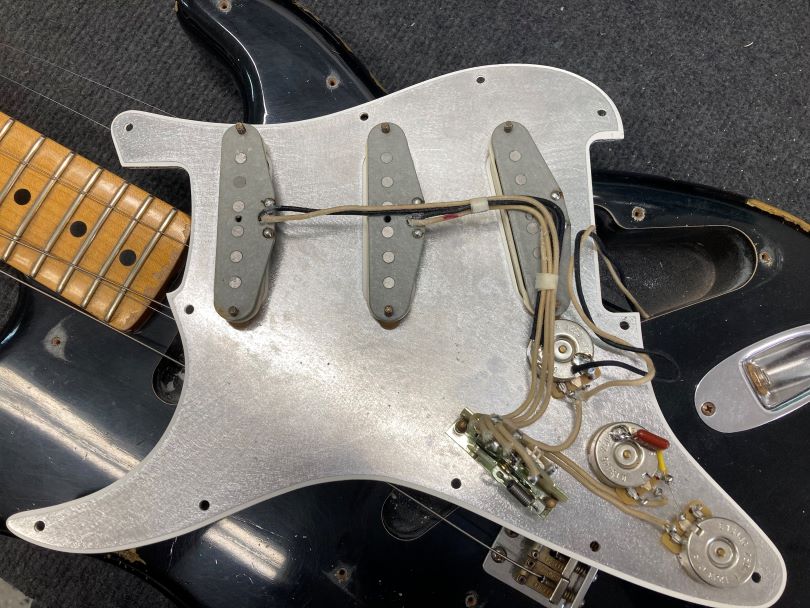
Push/pull and push/push potentiometers
Push/pull and push/push pots work on the same principle as S1 potentiometers. But they don't give as many options for engagement. They are commonly used on guitars to turn humbuckers to single coils. They can also be used for series or parallel wiring or for activating active electronics.
There are several models in current Fender production that use these pots to modify the sound. Most of them use the push/push potentiometers just for humbucker split.
For example, the Fender American Professional 2 model with a push/push potentiometer comes in SSS or HSS.
The SSS model offers standard wiring, but when you activate the push/push pot, which is located on the lower tone, the neck pickup is added to positions 1 and 2.
On the HSS model, activating the push/push potentiometer will turn the humbucker to single coil. The wiring is therefore the same as for the American Ultra model described above. The only difference is that the Ultra uses the S1 switch and the Professional applies the push/push potentiometer to adjust the sound.
In my experience, I recommend using push/push potentiometers on Stratocasters. These are always activated by simply pushing. Push/pull potentiometers, on the other hand, are activated by pulling them to the top position. Considering the pot knobs Fender uses on Stratocasters, using push/pull pots is rather impractical because there is nothing to grab when pulling them out. They simply slip between your fingers.
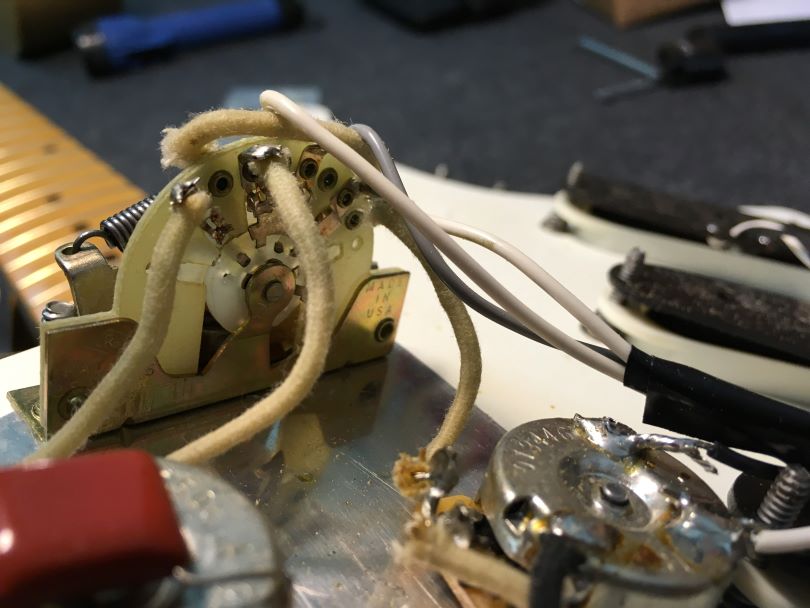
To close
The external look of the Stratocaster hasn't changed significantly over the course of Fender's history. Everything has been changed rather inside it. In this article, I wanted to illustrate how the pickup wiring configurations have changed without these changes being visually apparent.
Stratocasters, and Fender guitars in general, are ideal for devising various alternative ways of wiring electronics. If you're thinking about a new sound, I recommend consulting guitar service professionals. It's a quicker route than tediously searching for often unrealistic solutions.
If you don't want to do complicated custom wiring of electronics, just choose from Fender's range, which offers many attractive models with different pickup wiring options.
If you have found an error or typo in the article, please let us know by e-mail info@insounder.org.


